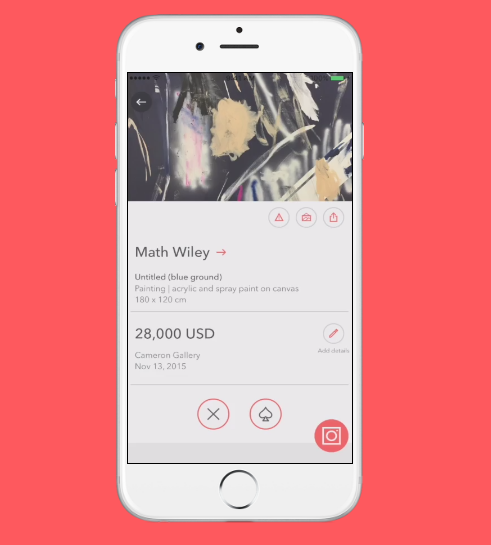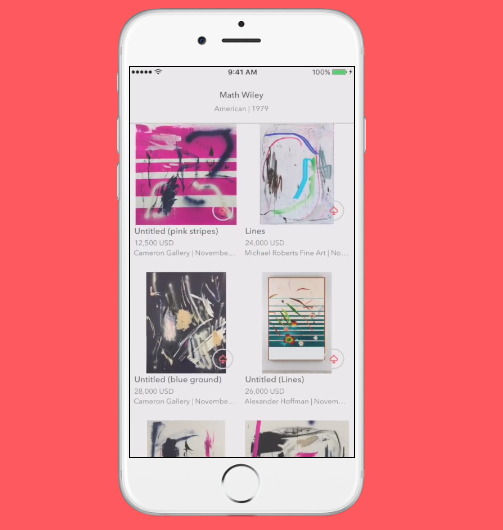Can Apps Really Democratise Art?
By Sukayna Powell
Apps and their browser-based counterparts dictate an enormous amount of what we see in our day to day lives, and this influence is increasingly encroaching on experience in the art world. Apps like Magnus, billed as ‘Shazam for art’, and Google Arts & Culture’s latest doppelgänger-hunt feature (not yet available in the UK, but eagerly anticipated) have provoked a lot of refreshing and positive discussion about transparency, democracy, and accessibility. They have also brought to the forefront the critical issue of ‘the coded gaze’; what it means for art to be stored in databases; for images to be read by AIs, disseminated by algorithms (both art-centric and otherwise), and for the architects of these new systems to be largely unknown entities.
Tech industries are, for example, notorious for being demographically homogenous (i.e. full of young white and Asian men from middle class backgrounds). Naturally, observers have registered concerns about the biases being unconsciously written into the code - the inability of some ‘recognition’ algorithms to deal with African features, for instance. Google Arts & Culture’s app encountered a variation on this theme, when users of colour were discomfited when confronted with ‘doppelgängers’ in paintings that would now be considered examples of colonial racism or orientalism. This is not the algorithm’s ‘fault’, nor is it necessarily even a bad thing, if it provokes a critical discussion, but it does bring up the issue of ‘context collapse’ – another thing fostered by ostensibly democratising new technologies.
When someone acquires a new piece of information or a new image, there are several ‘contexts’ at play – their subjective experience, their worldview and intellectual habits, the subjective experience of the artist or information generator, and the socio-intellectual world in which the information/image was ‘created’. Dissemination is also its own context, but due to the rapidity of innovation and adoption in the IT world, the nature of social media or a ‘sharing app’ as a context is only beginning to be studied. The fact that the algorithms that structure user-interface platforms are designed to be invisible and the platforms themselves are constructed with ease of use in mind encourages users to disengage with contexts other than their own. People don’t have to think about the creation or origin of the image/information, and they certainly don’t have to think about the process by which it is being presented to them. An extreme example of this is the blasé attitude towards attribution on sharing-hubs like Pinterest. Art is reduced to image and subjective reception.
Jennifer Brennan and Fergal Brennan, The Beholder’s Share, 2015, from an exhibition brochure for the Art and Research Centre. http://arciadt.ie/?p=562
Of course, many art-specific apps impart information alongside the image, as they are ultimately designed as educational tools, and ideally users would, over time, build a critical relationship with the artworks they are consuming. How likely this is to actually happen has yet to be determined. After all, one of the side effects of context collapse is a total lack of control over the reception of information or images. Whether the reception of images and information ought to be controlled by those disseminating them is, of course, a completely valid question. Many people argue that transparency is more democratic (and therefore ethical) than the art world’s traditional elitism sustained by obscurity. If, however, it came to the question of removing orientalist or racist artworks from Google’s doppelgänger database, it is difficult to know where those people would stand. Is the effort involved in understanding the context in which those artworks were created and the value they still hold to this day, despite their thematic content, part of what contributes to an impression of elitist obscurity?
An example of Google Arts & Culture’s face-match function in action. Screenshot taken 18th February 2018. Image Source: Robyn Thum-O’Brien
The obvious corollary to this hypothetical conundrum is the fact that, to a greater or lesser extent, these decisions are already being made somewhere. Databases are constructions, just as the art historical ‘canon’ is. The difference is that where it is fairly easy to point at the architects of the canon (indeed, there is a whole discipline and not a few artistic and critical practices devoted to this task), there is, somewhat ironically, a distinct lack of transparency about the agents involved in constructing the databases that feed democratising apps. To what extent are artworks being selected by algorithms, who wrote those algorithms, and what did they write in or write out while doing so? There can be little doubt that this tension between transparency to the point of contextual collapse, on the one hand, and obscurity to the point of contextual invisibility on the other will affect the way that we interact with art and the art world.
Martin Grandjean, untitled vector illustration of a network visualisation. Image Source: https://www.interaction-design.org/literature/article/how-to-display-complex-network-data-with-information-visualization
All this is not to suggest that there is nothing to be said for the eventual transformation of the hermetically sealed ‘art world’ with a more heterogenous and holistic ‘cultural network’ of some kind, but arguing for the utopian promise of such a scenario betrays a naivete about our current capacity to make a success of such a project. As long as the tech industry remains opaque, demographically imbalanced, and profit-driven, and our use of social information technologies continues to trend towards palliative, contextually unconfrontational consumption, it would be unwise to look with uncritical hope towards these systems and their architects.
Bibliography
Artnet news, “Leonardo DiCaprio Joins the Magnus App as Investor and Advisor”, 6th February 2018. https://news.artnet.com/market/leonardo-dicaprio-magnus-1217447
Boucher, Brian. “Magnus Art-Pricing App Pulled from Apple Store Amid Evidence of Extensive Data Theft”, 1st August 2016. https://news.artnet.com/art-world/magnus-app-pulled-accusations-data-theft-586322
Chen, Adrien. “The Google Arts & Culture App and the Rise of the Coded Gaze”, 26th January 2018. https://www.newyorker.com/tech/elements/the-google-arts-and-culture-app-and-the-rise-of-the-coded-gaze-doppelganger
Davis, Ben. “State of the Culture, IV: Why the ‘Art World’ as We Know It is Ending”, 2nd February 2018. https://news.artnet.com/opinion/state-of-the-culture-iv-context-collapse-is-reformatting-the-art-world-1214525
Magnus.net, “About”, accessed 12th February 2018. https://www.magnus.net/about/
The Google Cultural Institute. “Art Project”, accessed 12th February 2018. https://www.google.com/culturalinstitute/about/artproject/





